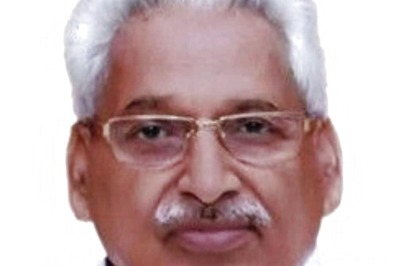
views
Recently China imposed a lockdown in Shenyang city of Liaoning province overnight. A phased lockdown has also been imposed in Shanghai, China’s biggest city and a financial hub. This is because of the biggest viral surge in China in the last two years. The number of new COVID-19 cases has nearly doubled in several nations such as the UK, China, the US, and parts of Europe.
More than a dozen provinces and cities in China have announced lockdowns and travel bans. The situation in Shanghai and provinces like Hebei, Jilin and Guangdong has deteriorated. Many people are caught in survival mode in Shanghai because it is completely closed. Beijing’s zero-tolerance policy is also being tested by the emergence of new cases attributed largely to the ‘Stealth Omicron’, a sub-variant of Omicron. The number of new daily infections in Germany, as per worldometers, stood at nearly 2.38 lakh cases on March 29. Similarly, New Zealand is also witnessing a rise in cases.
Omicron, a variant of COVID-19, has been spreading like a wildfire since November 2021, leading to a record number of cases around the world. Though a majority of countries did see less severe infection, China and Hong Kong are seeing the worst of this, with China imposing lockdown measures in multiple provinces. With COVID-19 cases rising in India’s neighbouring countries, experts have warned that a fourth wave in India may be a possibility.
The cause of concern is the ‘Stealth Omicron’, which is a sub-variant of Omicron that had caused the third wave in the country. While Omicron proved to be less deadly than the Delta variant, it was highly infectious compared to its previous counterparts. The BA.2 strain which is commonly called the ‘Stealth Omicron’ has been implicated as a major factor in rising cases in China, Hong Kong and Europe.
Reasons for the New Wave
Hong Kong has reported the highest death rate for COVID-19 globally. This is because of low vaccination rates among the elderly and the overburdened health infrastructure. Adding to this is the “high density population and cramped up spaces, especially in public housing estates,” a Hong Kong virologist told The Guardian. A huge number of people ending up in hospitals are not vaccinated and elderly. The vaccination rate in Hong Kong is currently 81 per cent for those aged 12 and above. Vaccines administered in Hong Kong include Sinovac, a traditional inactivated vaccine manufactured in China, and BioNTech’s mRNA vaccine made in Germany. Among those aged 80 and above, the figure declines to nearly 37 per cent.
Similar to Hong Kong, China has also been struggling to control the surge in cases. Its zero-COVID policy and the inefficacy of vaccines seem the most likely reasons. Government officials have been forced to impose lockdowns to tackle the spread of the infection in the country, leading to break in industry supply chains, closing of markets and loss of jobs and income.
China has been using China-developed vaccines. It is believed that Sinovac, Sinopharm-Beijing and Sinopharm-Wuhan are being used for most of the population. These vaccines contain killed viruses against whom the immune system of the body mounts a response. This is in contrast to Covishield used by the majority of the population in India. Covishield is a viral vector vaccine, it has genetic material of COVID-19 virus packed into a harmless virus. Although Covishield provides better and longer immunity in comparison to the Chinese vaccines, it loses out to mRNA vaccines, used in the other countries, on some parameters.
Chinese vaccines offer efficacy of less than even 50 per cent against infections as compared to 70-75 per cent provided by Covishield. These numbers are said to be lower with Omicron and the possibility of them being even lower for new variants such as BA.2 is quite real. Both India and China are yet to administer the highly effective mRNA vaccines to their people. These vaccines can even be tweaked at the earliest in response to new variants. Booster doses are picking up momentum with around half of China’s population having received them. China has also allowed mixing and matching of vaccines. Both countries are somewhat similar in population composition with India’s average population being 10 years younger than China’s.
How to Prevent a Fourth Wave
India has to learn from its past mistakes and from around the world. It would be unwise to try to emulate China’s zero-COVID policy with lockdowns and travel restrictions. India would not be able to bear the damage to the economy and livelihoods. We should increase our coverage of booster doses which is currently at a dismal 2 per cent to at least 50 per cent by June. This can be done by allowing all adults to get boosters and reducing the nine-month waiting period between second dose and the booster. Next wave predictions for India are being made for June-July, 2022.
The National Technical Advisory Group on Immunisation (NTAGI) has already recommended reducing the gap between two doses of the largely used Covishield vaccine. Several countries are encouraging mixing and matching different types of vaccines. NTAGI’s Standing Technical Sub Committee is reviewing the latest data from various Indian studies after the government’s initial refusal last year to allow mixing and matching. It is also important that we keep public health measures such as masks, social distancing and restricting large public gatherings in place to prevent sudden breakouts of COVID-19. This is the right time to develop our healthcare capacity for the projected next wave. This is the third year of the COVID-19 pandemic. It is quite shameful that we still have to divert our existing hospitals and healthcare capacity to accommodate the increase in COVID-19 patients when a wave strikes.
We hope an unlikely hope, that the next wave doesn’t come. As Stephen King said, “There’s no harm in hoping for the best as long as you’re prepared for the worst.”
Priyal Lyncia D’Almeida and Dr Harshit Kukreja are research analysts with The Takshashila Institution. The views expressed in this article are those of the authors and do not represent the stand of this publication.
Read all the Latest Opinion News and Breaking News here


















Comments
0 comment